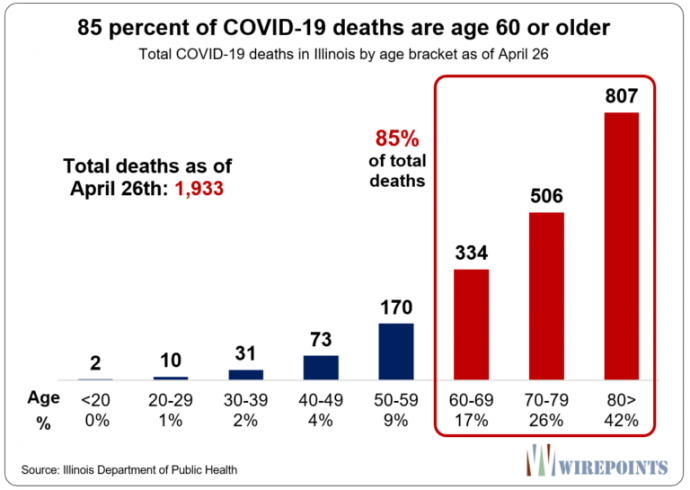By Ted Dabrowski and John Klingner:
On March 20, Illinois Gov. J.B. Pritzker signed an executive order requiring residents to stay at home in response to COVID-19. With sparse and inconsistent data to go on, the state acted in an abundance of caution. And facing fear and uncertainty, the general public accepted shutdown orders that have resulted in an economic collapse.
But today, the situation is far different. We now have far more data about the crisis and yet the state’s overall shutdown strategy hasn’t materially changed.
For one, the data tells us who’s most at risk from COVID-19, and it’s not the general public. It’s overwhelmingly those with preexisting conditions, especially the elderly. They’re the ones that need to be far better protected, and if necessary, quarantined.
We’ve also learned that Illinois had more than enough health care resources to meet our peak needs. Overall beds, ICU beds and ventilators are all in excess capacity.
And that means the general public should phase back into work immediately, while there’s still work to be had. The economic data shows how quickly the current lockdown is killing jobs and livelihoods. Economic recession and depressions cause deaths of their own.
Gov. Pritzker has seemingly ignored all the above. In fact, he recently extended Illinois’ shutdown by another month – through May 30.
Here are seven common sense facts Illinoisans should know about the state’s COVID-19 situation:
1. It’s those with preexisting conditions, especially the elderly, that are most at risk.
Illinois’ death data for COVID-19 shows the elderly are most in danger.
Nearly 1,950 Illinoisans have died of the virus as of April 26th. Of those victims, 85 percent of them were age 60 or older.
The group most in danger from the virus, however, is even more narrow than that. The overwhelming majority of people who have been hospitalized or have died due to COVID-19 had other underlying conditions, including hypertension, diabetes and coronary disease – known as comorbidities.
Read more: Wirepoints

